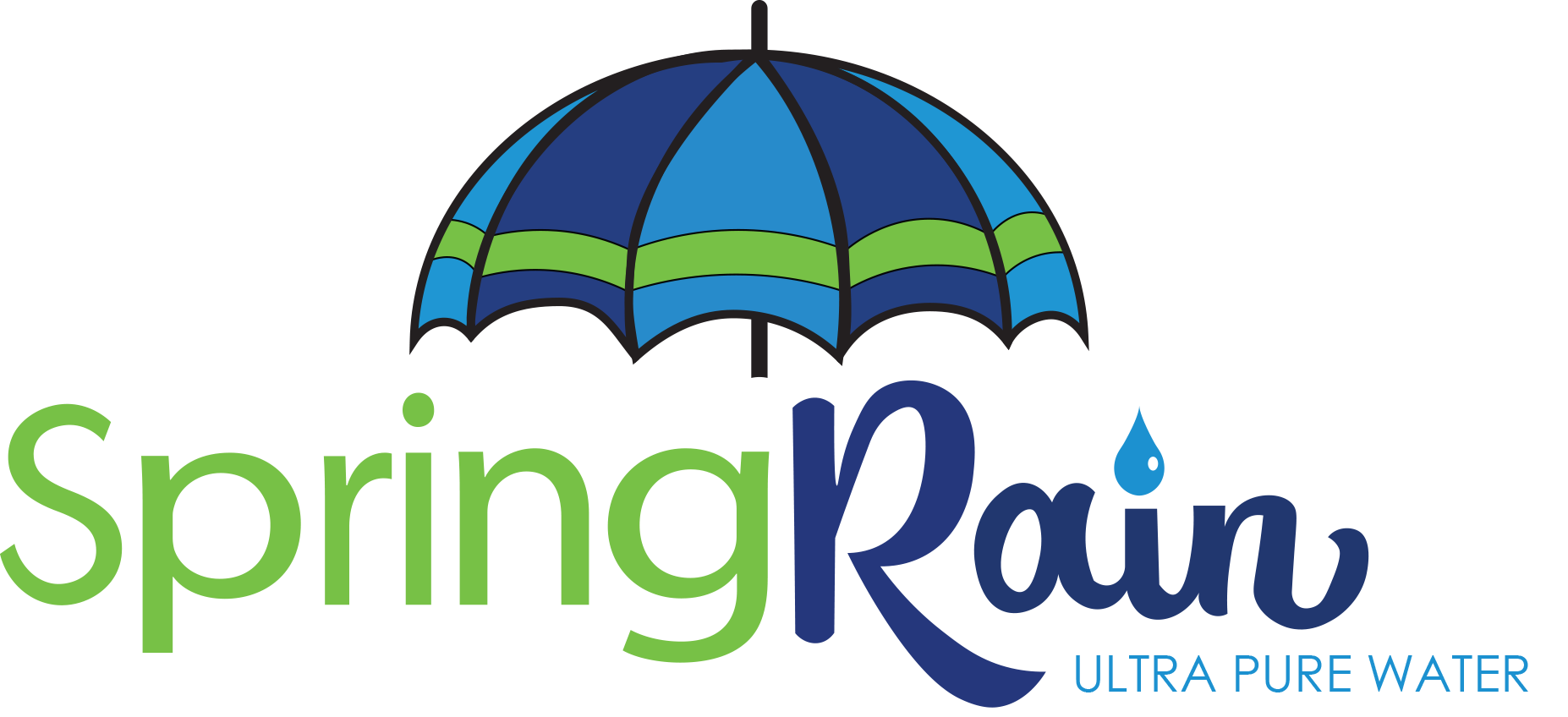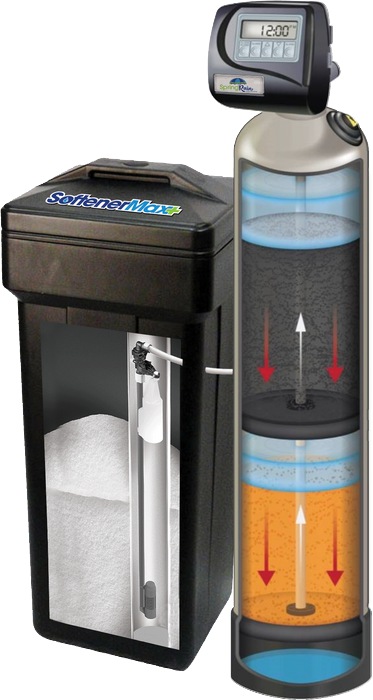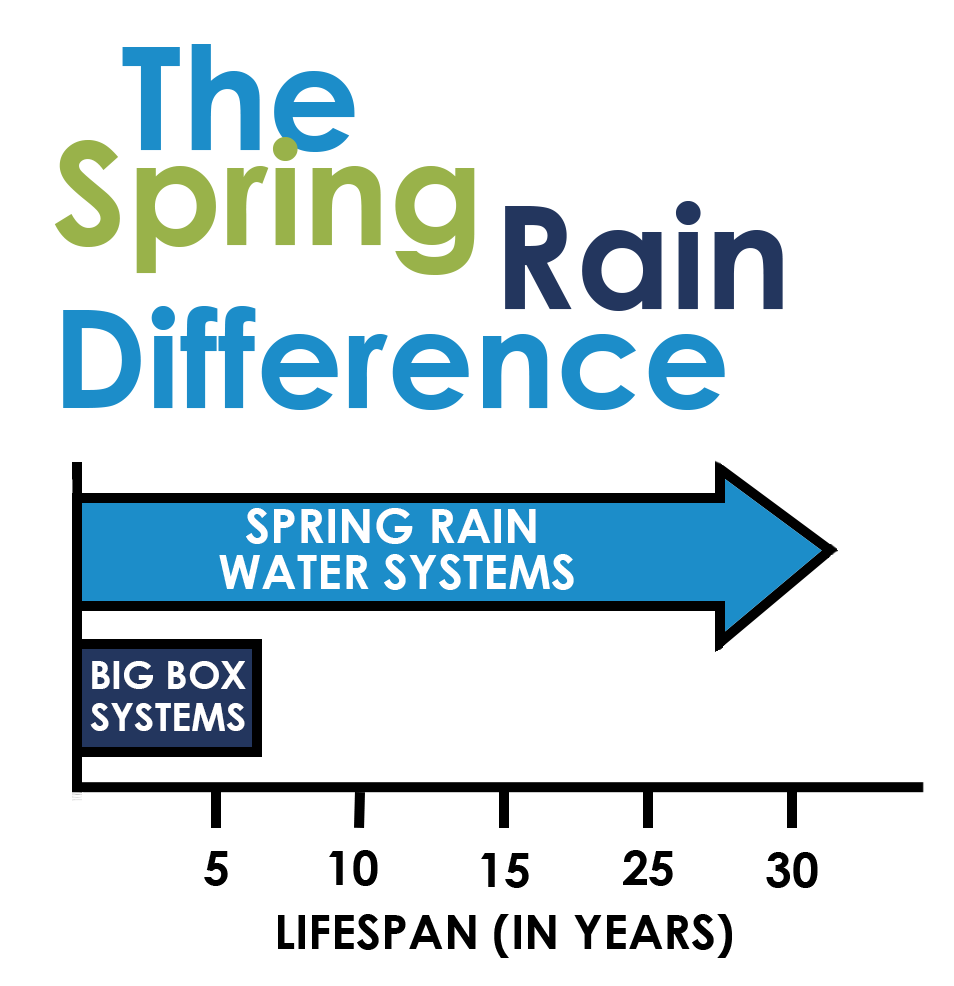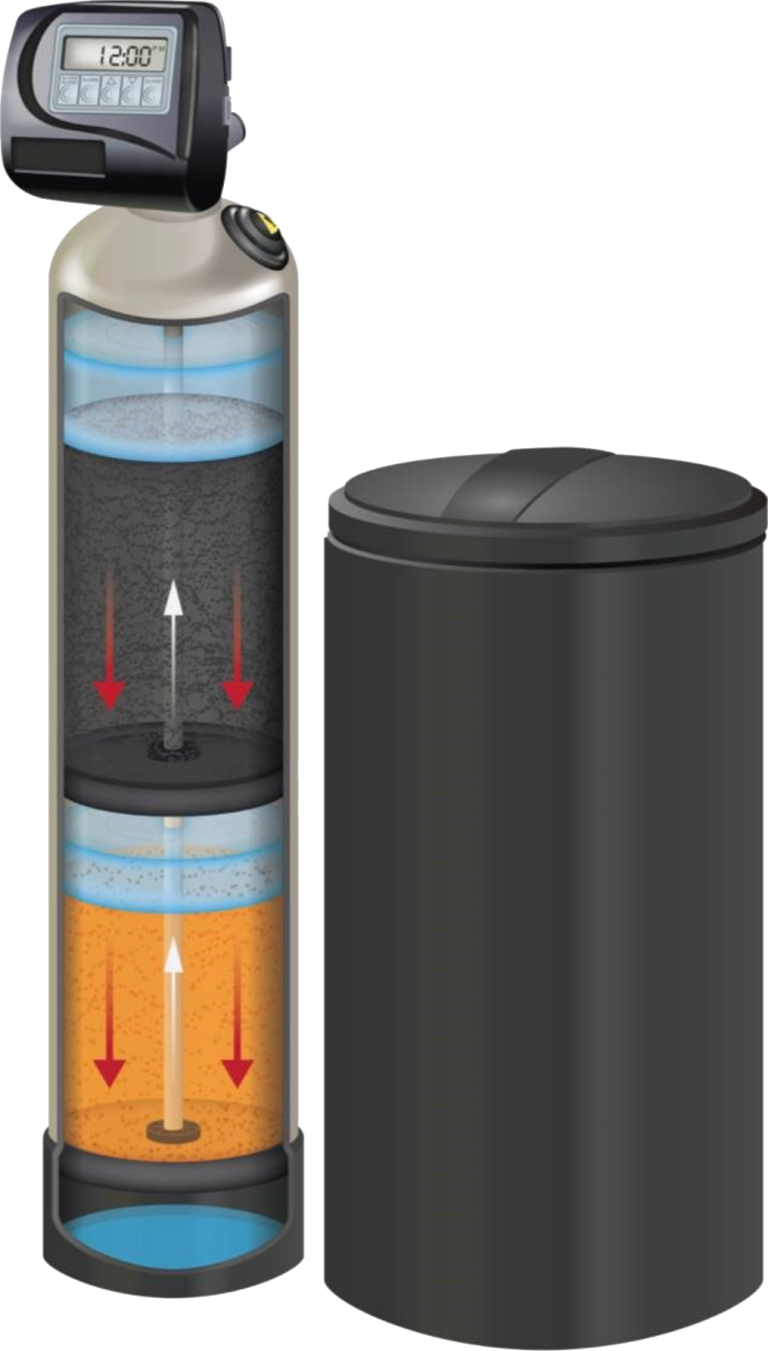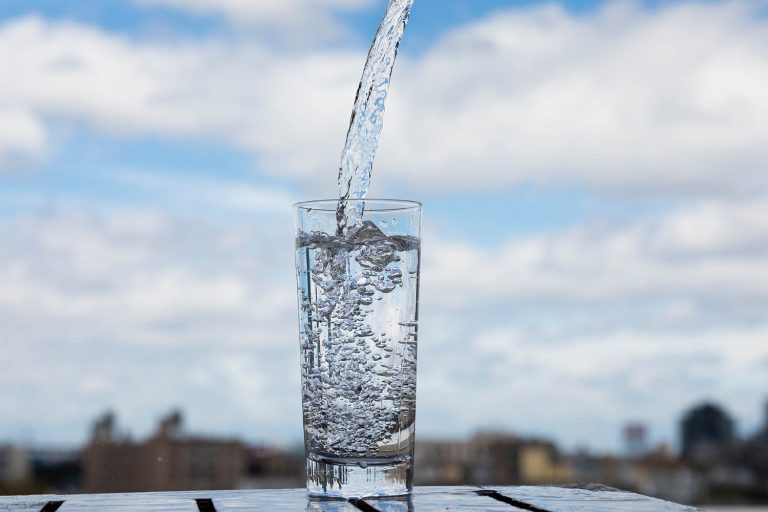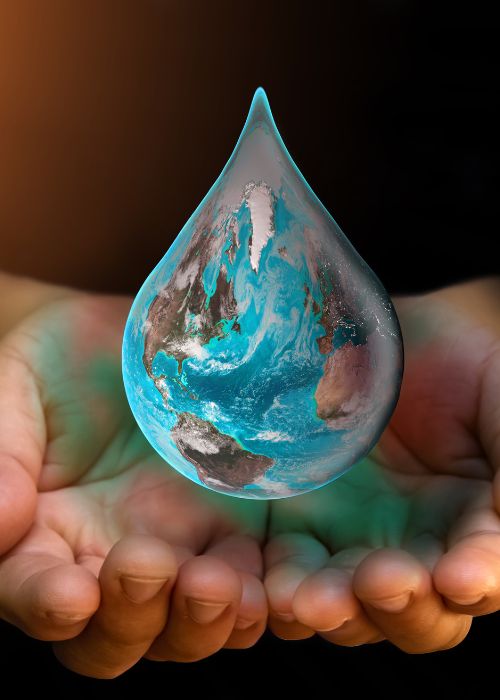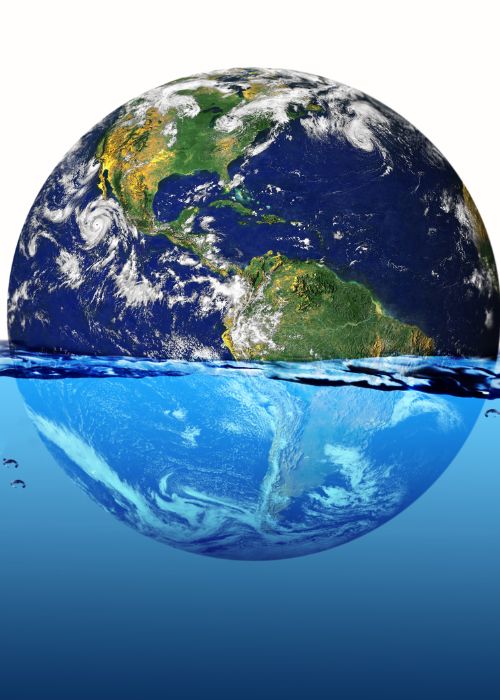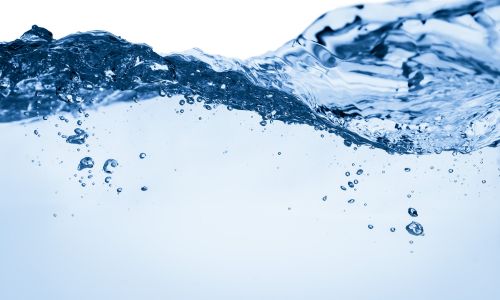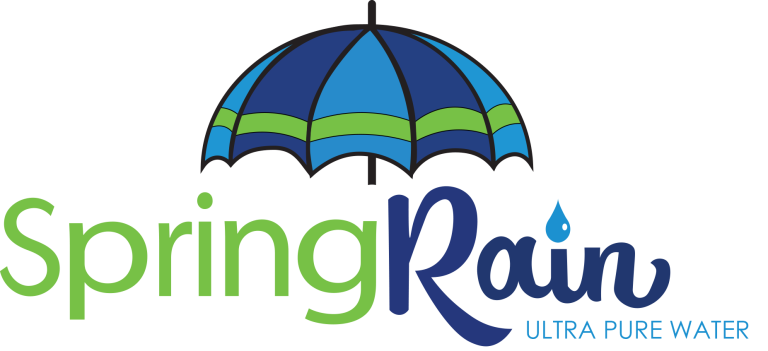SOFTENERMAX
The Softener Max System has been specially designed to last 5 times longer than big box store models. Further, unlike big box stores, Spring Rain is on call 24/7/365 to service our systems. Tailored to the water quality in the Phoenix, Arizona this system will handle the hardest of water.
Features:
Long Term Savings • Uses a clack metered valve which tracks water usage. The system then only regenerates based on your water consumption, helping to save salt and reduce costs.
Long Lasting • The system is built with a 14% macro porous resin that enables your water softener to resist the negative affects of the chlorine and chloramine found in the municipal water supply.
Water Conservation • Uses a Vortech structural tank to reduce backwash volume, saving water use.
Dependable • Includes a battery backup in the event of a power failure.
This system also features a brine grid, a built-in bypass, and your choice of brine tank size.

